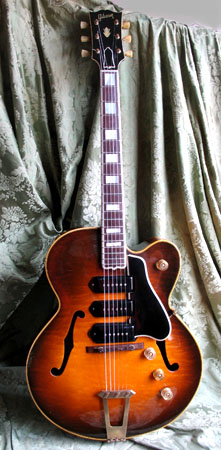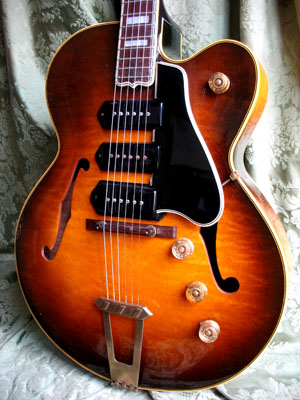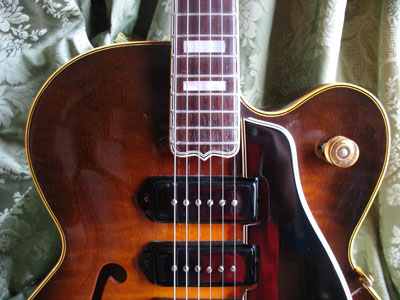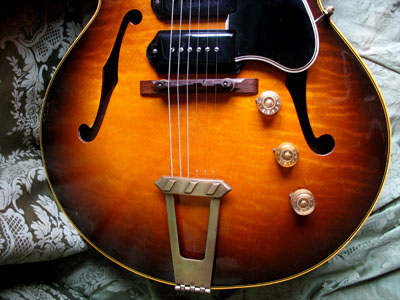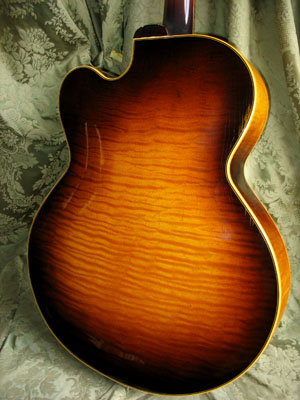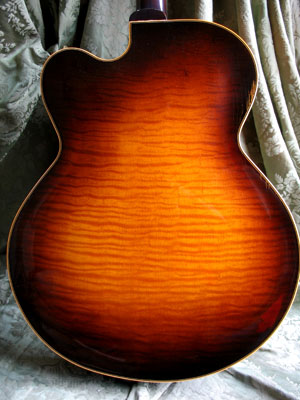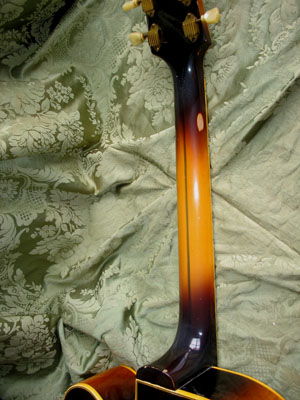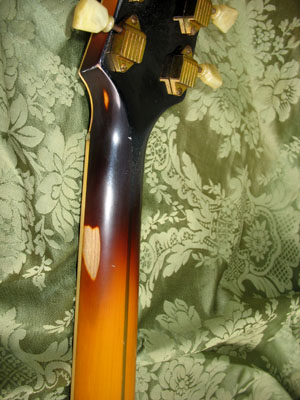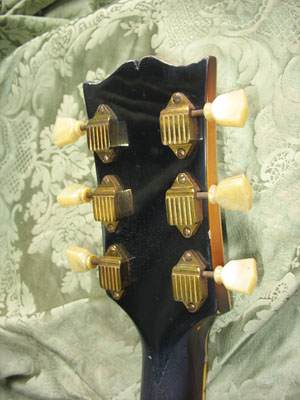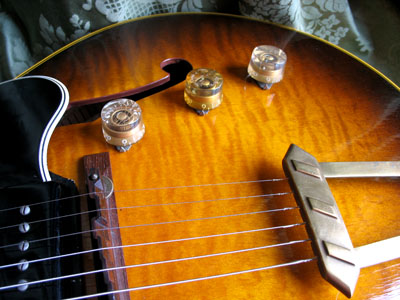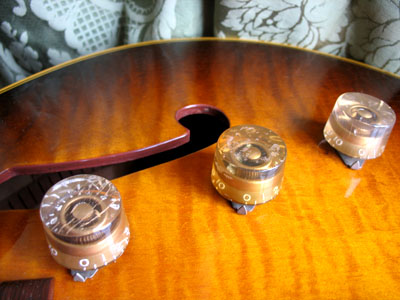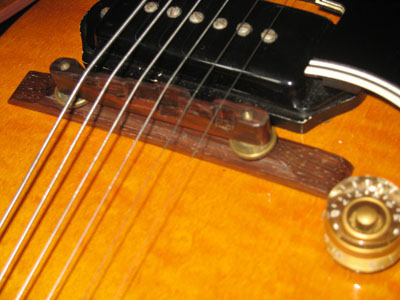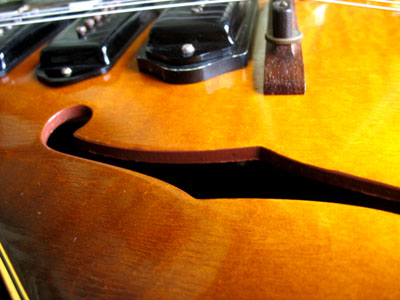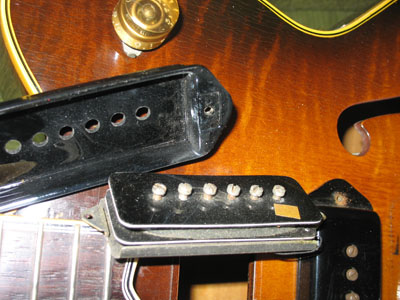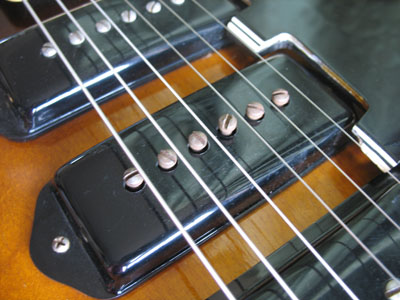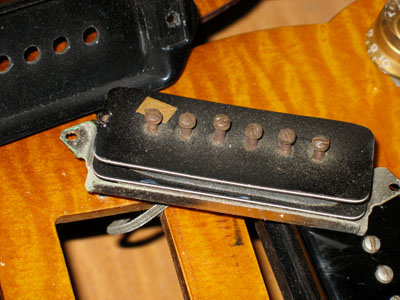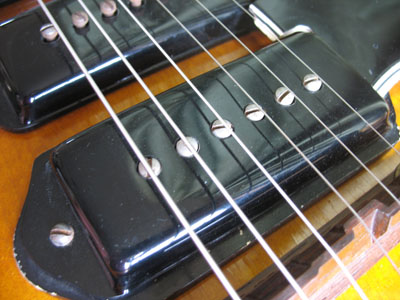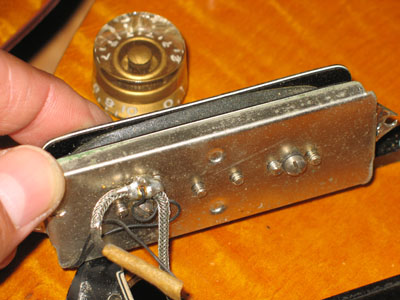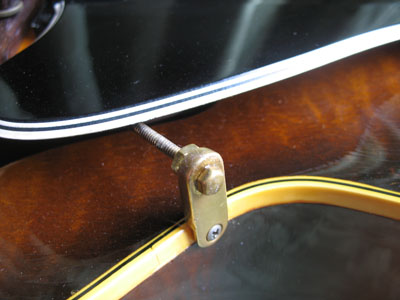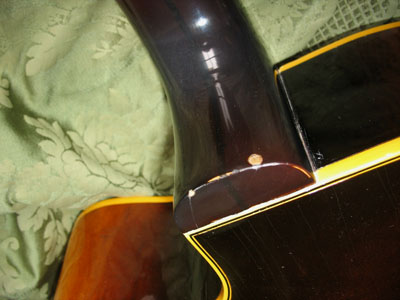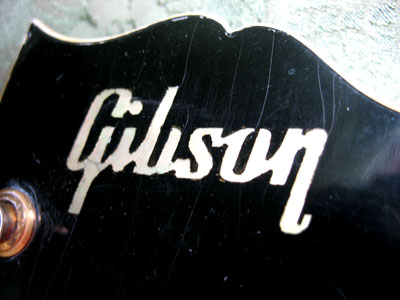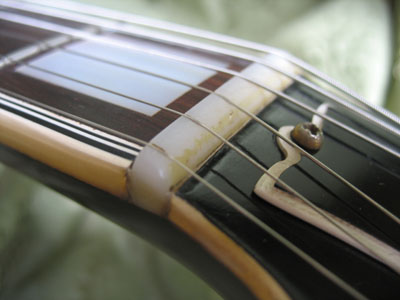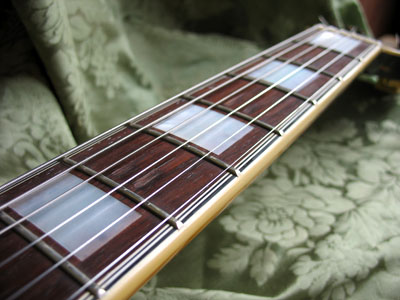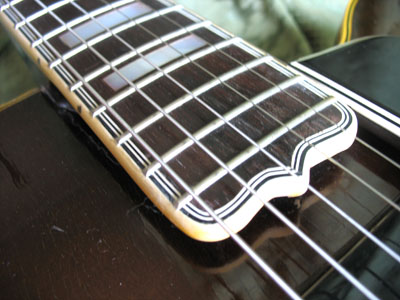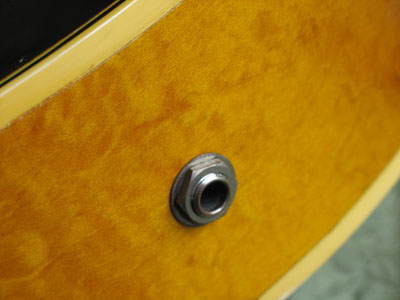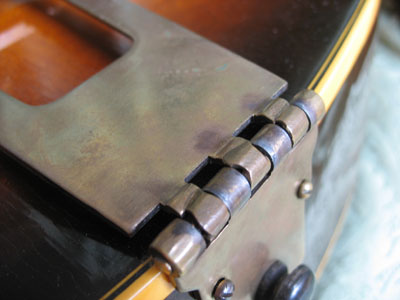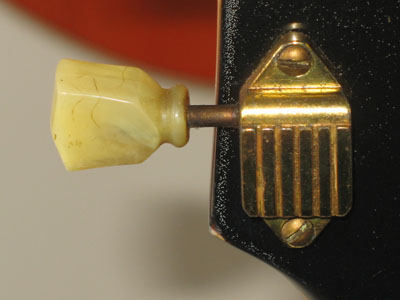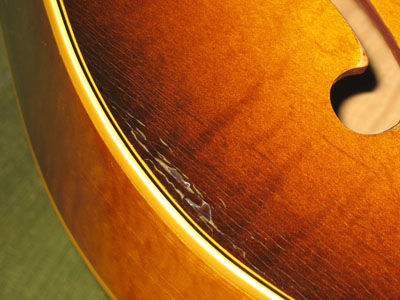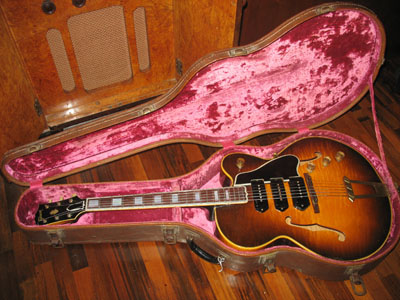
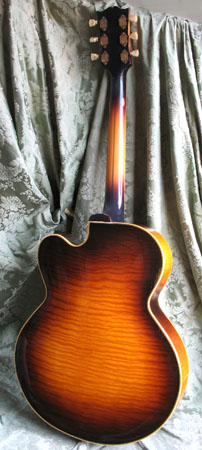


|
GIBSON ES-5, 1950 This exceptional archtop, formerly in my private collection, shows the rare early version of the ES-5, with no binding around the soundholes. The model, introduced in 1949, is quite well-known among the visitors of this webpage, since you'll remember that we have had quite a few through the years, including two of the twelve prototypes which mixed features of both the ES-350 and the new-born model. The ES-5 you see here is exceptionally beautiful thanks to its flamed-maple body finished in a gorgeous sunburst color. The unbound f-holes are typical of the earliest ES-5s built in 1949 (including the prototypes) and in the first half of 1950. This one was built in May of 1950 and is in excellent conditions. The neck is made of maple with a central mahogany stripe, and the multi-bound, pearl-inlaid fretboard and the pre-compensated bridge are made of brazilian rosewood. The hardware is all original: Super Kluson gold-plated tuners with tulip-shaped plastic buttons, laminated plastic pickguard with brass bracket, 'tall-barrell' knobs found only in 49-53 models, gold-plated brass trapeze tailpiece. The latter has the hinge rings resoldered: the repair is visible but is solid and well-done, and has allowed to keep in use the original part. The pickups are three original P-90s, never dissoldered, repaired or modified, which are the real heart of an instrument that found in its electronics its peculiarity. In a timne when Gibson had just introduced its first cutaway electric archtop - the 1947 ES-350 P with a single P-90, upgraded to a two pickup version in 1948 - with its three P-90s and the high-end cosmetics the ES-5 really was "Out of this world" as a famous ad was saying. The three pickups were controlled by three individual volume knobs and one master tone in the cutaway, and its circuitry was built so that the third pickup was out-of-phase with the other two: although initially difficult to handle onstage, this special circuitry gave to the early '50s guitar-players the legendary voice that became the trademark of such great blues giants as T-Bone Walker and Lowell Fulson, who used the out-of-phase "hollow" sound of their ES-5s to blaze the trail for the early electric blues. The body has moderate traces of wear and is beautifully checked (only in two or three spots, shown in detail in the pictures below, there is some finish gone). The neck shows some wear in the first positions and right under the headstock, maybe due to a wall hanger. There are no structural problems whatsoever, the neck-body joint is solid and original, the neck is straight and with a nice action, the fretboard is in good shape and all the electronics work well, with three great-sounding pickups. A very beautiful and rare guitar in excellent conditions, which comes with its original Geib hadshell case in very good shape as well. |
